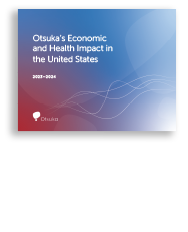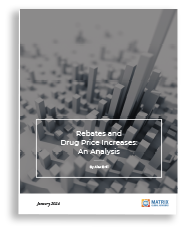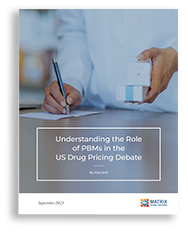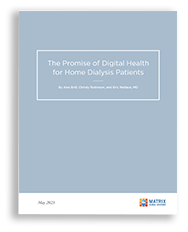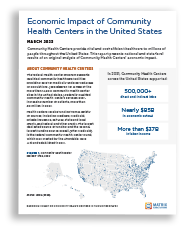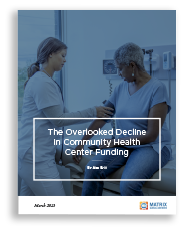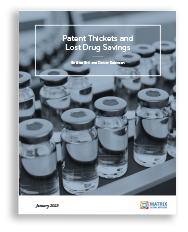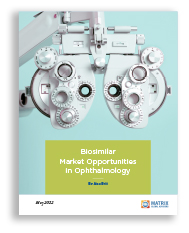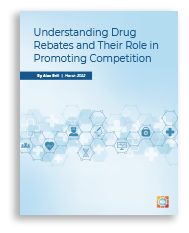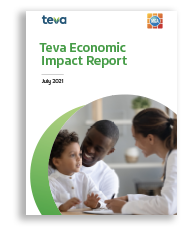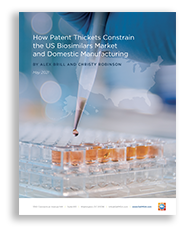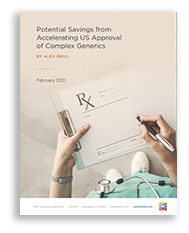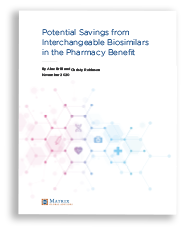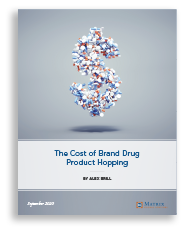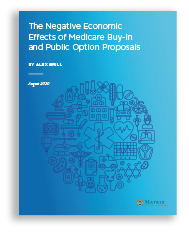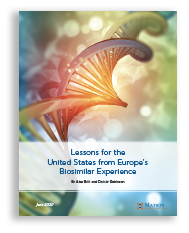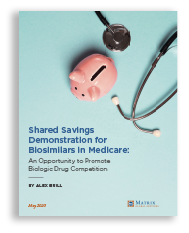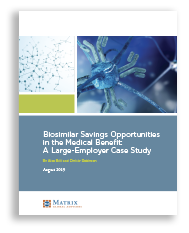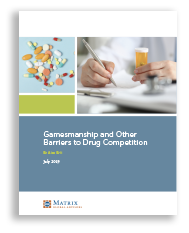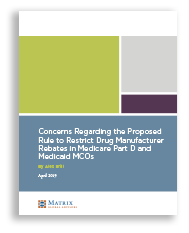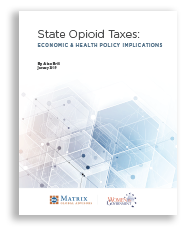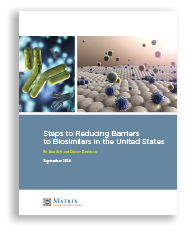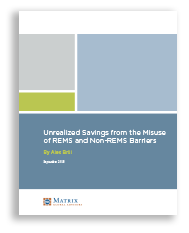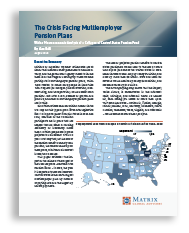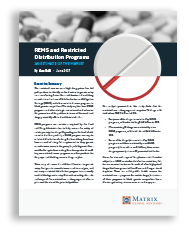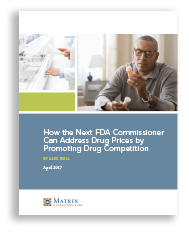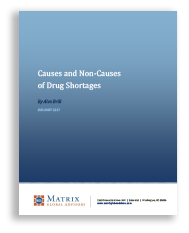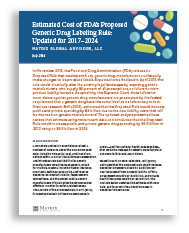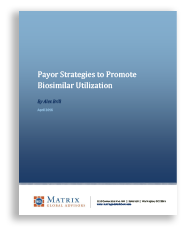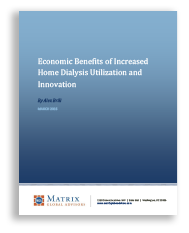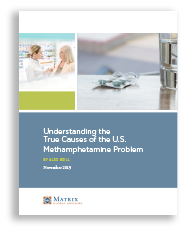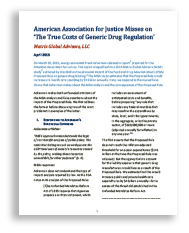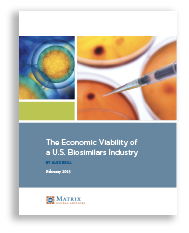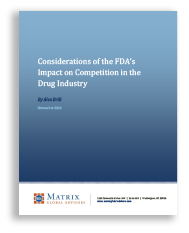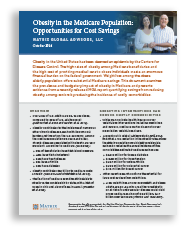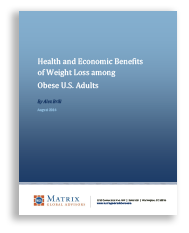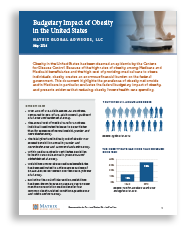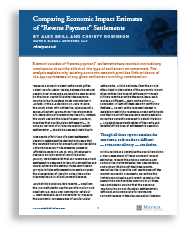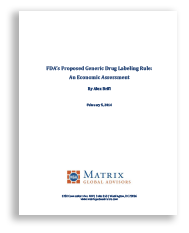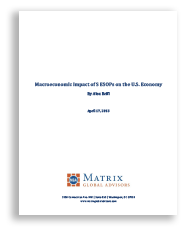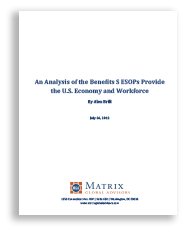REPORTS
2024
Otsuka’s Economic and Health Impact in the United States
March 2024 – The report highlights the broad economic impact of Otsuka’s US operations, R&D, corporate social responsibility, and patient support and advocacy.
Report
California State Report
Maryland State Report
New Jersey State Report
Rebates and Drug Price Increases: An Analysis
January 2024 – This analysis finds that prescription drugs without rebates comprise 9 of the top 10 drugs with the largest price increases.
Report
2023
Regulatory Uncertainty: General Economic Principles and the Case of Employee Stock Ownership Plans
October 2023 – Regulatory uncertainty creates burdens and risks that can discourage employee ownership and hamper ESOP-owned businesses.
Report
Understanding the Role of PBMs in the US Drug Pricing Debate
September 2023 – Targeting PBMs’ incentives and ability to negotiate lower prices with manufacturers could result in higher total drug spending.
Report
The Promise of Digital Health for Home Dialysis Patients
May 2023 – Digital technology holds great promise for people with kidney failure, particularly those who are candidates for home dialysis.
Report
Economic Impact of Community Health Centers in the United States
March 2023 – This report presents national and state-level results of an original analysis of Community Health Centers’ economic impact in the United States.
Report
State Reports
Near-Term Expectations for Adalimumab Biosimilars in the United States
February 2023 – Biosimilar competition for Humira (adalimumab) has finally arrived, but a competitive market will take time to mature.
Report
Patent Thickets and Lost Drug Savings
January 2023 – The one-year cost from delayed competition because of patent thickets around five brand drugs ranges from $1.8 billion to $7.6 billion.
Report
2022
Improvements in Medical Benefit Coverage of Biosimilars
December 2022 – This analysis demonstrates how medical benefit coverage for biosimilars has increased as prices have declined.
Report
Biosimilar Market Opportunities in Ophthalmology
July 2022 – As the first opthalmology biosimilars enter the US market, there is potential to generate significant savings for the US healthcare system and incress access for patients.
Report
Alex Brill writes to the FTC
May 2022 – The letter submitted details his findings from earlier this year that PBM rebates do not cause an increase in drug prices.
Comment Letter
Understanding Drug Rebates and Their Role in Promoting Competition
March 2022 – Drug rebates are not the drivers of high drug prices, but help lower health insurance premiums and drive competition among drug manufacturers.
Report
2021
Teva Global Economic Impact Report
July 2021 – The report highlights the billions of dollars saved by Teva’s quality generic medicines and Teva’s contributions to economies around the world.
Report
How Patent Thickets Constrain the US Biosimilars Market and Domestic Manufacturing
May 2021 – In addition to blocking savings from biosimilars, patent thickets around reference biologics in the US create a barrier to the domestic manufacturing of biosimilars.
Report
Potential Savings from Accelerating US Approval of Complex Generics
February 2021 – Accelerating the approval of complex generic drugs represents an untapped opportunity for realizing savings for US patients and healthcare payors.
Report
Executive Summary
2020
Potential Savings from Interchangeable Biosimilars in the Pharmacy Benefit
November 2020 – The exact level of savings arising from biosimilar interchangeability may be uncertain, but the potential for savings is significant.
Report
The Cost of Brand Drug Product Hopping
September 2020 – Using a strategy known as product hopping, brand drug companies prevent generic competition, extend their monopoly prices, and keep costs high.
Report
Negative Economic Impact of Restricting Drug Rebates in Medicare Part D
September 2020 – Restricting drug rebates in Medicare Part D without prompting an increase in federal spending, premiums, or out-of-pocket costs is infeasible.
Report
The Negative Economic Effects of Medicare Buy-In and Public Option Proposals
August 2020 – Medicare buy-in and public option proposals would negatively affect more people than is commonly understood and should be concerning to a range of stakeholders.
Report
Executive Summary
Lessons for the United States from Europe’s Biosimilar Experience
June 2020 – In considering the European biosimilar experience, the United States should avoid certain market pitfalls but adopt some lessons to speed the development of the U.S. biosimilars market.
Report
Shared Savings Demonstration for Biosimilars in Medicare: An Opportunity to Promote Biologic Drug Competition
May 2020 – A unique opportunity exists in Medicare Part B to boost biosimilar utilization through the establishment of a shared savings demonstration model.
Report
Executive Summary
The Unintended Economics of the BLOCKING Act
January 2020 – Reducing the incentive for generic drug firms to challenge brand drug patents would delay generic entry and savings.
Report
2019
Biosimilar Savings Opportunities in the Medical Benefit: A Large-Employer Case Study
August 2019 – Biosimilars represent an important opportunity for employers and their health plan members to realize health care savings.
Report
Gamesmanship and Other Barriers to Drug Competition
July 2019 – Brand drug companies use a wide array of tactics to delay generic competition for their products, resulting in substantial lost savings to the U.S. health care system.
Report
Concerns Regarding the Proposed Rule to Restrict Drug Manufacturer Rebates in Medicare Part D and Medicaid MCOs
April 2019 – The proposed rule to restrict rebates is poorly conceived and holds the potential for serious negative consequences.
Report
State Opioid Taxes: Economic & Health Policy Implications
January 2019 – A tax on prescription opioids would be ineffective at discouraging misuse and would impose a burden on the health care sector broadly.
Report
2018
Steps to Reducing Barriers to Biosimilars in the United States
September 2018 – Despite the existence of a regulatory pathway for biosimilars, barriers remain that hinder the development of a robust market for these cost-saving alternatives to biologic drugs.
Report
Unrealized Savings from the Misuse of REMS and Non-REMS Barriers
September 2018 – Brand drug manufacturers’ practice of thwarting access to samples needed to develop generic drugs blocks an estimated $13.4 billion in generic savings—an increase of nearly 250 percent over four years.
Report
The Crisis Facing Multiemployer Pension Plans
August 2018 – Millions of American workers’ retirements are at risk as their multiemployer pension plans head toward insolvency and the government agency meant to insure them is on the verge of bankruptcy.
Report
2017
REMS and Restricted Distribution Programs: An Estimate of the Market
June 2017 – In 2016, 74 drugs with total sales of $22.7 billion represented the segment of the drug market in which brand drug manufacturers could use REMS and other restricted access programs to block generic competition.
Report
How the Next FDA Commissioner Can Address Drug Prices by Promoting Drug Competition
April 2017 – In the U.S. market, competition in the pharmaceutical sector is key to moderating drug prices, and the FDA plays an important role in fostering (or discouraging) this competition.
Report
Employee Stock Ownership Plans as an Exit Strategy for Private Business Owners
March 2017 – Employee stock ownership plans offer business owners an exit strategy that preserves firm continuity, fosters employee commitment, and builds lasting economic value in a community.
Report
Causes and Non-Causes of Drug Shortages
January 2017 – A variety of factors contribute to drug shortages, including quality control concerns in manufacturing and capacity constraints generally.
Report
2016
Estimated Cost of FDA’s Proposed Generic Drug Labeling Rule: Updated for 2017–2024
July 2016 – The FDA’s Proposed Rule to permit generic drug manufacturers to change drug labels would increase generic spending by $5.6 billion in 2017, rising to $8.6 billion in 2024.
Report
Payor Strategies to Promote Biosimilar Utilization
April 2016 – Carefully constructed physician incentives from public and private payors could boost biosimilar utilization, benefiting U.S. patients and the health care system as a whole.
Report
Economic Benefits of Increased Home Dialysis Utilization and Innovation
March 2016 – If barriers to home dialysis were removed, the resulting increase in home dialysis utilization would both benefit patients and send strong signals to innovators to develop new technologies.
Report
2015
Understanding the True Causes of the U.S. Methamphetamine Problem
November 2015 – Fighting methamphetamine use in the United States by restricting access to cold and allergy medicines containing pseudoephedrine fails to address core underlying issues: continued demand for meth and an ample foreign supply.
Report
American Association for Justice Misses on “The True Costs of Generic Drug Regulation”
April 2015 – An American Association for Justice report makes both unfounded criticisms of an MGA analysis and false assertions about the impact of the FDA Proposed Rule on generic drug labeling.
Report
The Economic Viability of a U.S. Biosimilars Industry
February 2015 – Because of the expected regulatory framework and economic conditions, a robust U.S. biosimilars market for a broad spectrum of biologic products is unlikely, but biosimilar entry for blockbuster biologic products is viable.
Report
2014
Considerations of the FDA’s Impact on Competition in the Drug Industry
November 2014 – The FDA, within its core mission of ensuring the safety and efficacy of drugs, affects competition in the pharmaceutical industry in important ways.
Report
Obesity in the Medicare Population: Opportunities for Cost Savings
October 2014 – The high rates of obesity among Medicare beneficiaries and the high cost of providing medical care to obese individuals create an enormous financial burden on the federal government.
Report
Health and Economic Benefits of Weight Loss among Obese U.S. Adults
August 2014 – There is substantial potential savings, nationally and for the Medicare population, from preventing the development of five comorbidities by reducing obesity rates by 10 percent.
Report
Lost Prescription Drug Savings from Use of REMS Programs to Delay Generic Market Entry
July 2014 – If brand drug manufacturers stopped misusing restricted distribution to keep drug samples from generic manufacturers, $5.4 billion in annual drug spending could be saved.
Report
Budgetary Impact of Obesity in the United States
May 2014 – The prevalence of obesity nationwide and in Medicare, in particular, has a substantial federal budgetary impact, but there is evidence that reducing obesity lowers health care spending.
Report
Comparing Economic Impact Estimates of “Reverse Payment” Settlements
February 2014 – Economic studies of “reverse payment” settlements have reached contradictory conclusions about the effect of this type of settlement on consumers, indicating that broad research provides little evidence of the appropriateness of any given settlement.
Report
FDA’s Proposed Generic Drug Labeling Rule: An Economic Assessment
February 2014 – The FDA’s Proposed Rule to allow generic drug makers to make changes to product labels would drastically alter the legal landscape and increase spending on generics by $4 billion per year.
Report
2013
The Long-Term Returns of Obesity Prevention Policies
April 2013 – Obesity prevention policies need longer-term budget impact analyses than the typical 10-year estimates from the Congressional Budget Office.
Report
Macroeconomic Impact of S ESOPs on the U.S. Economy
April 2013 – S corporations that sponsor employee stock ownership plans have a positive impact that benefits not only employee-owners, but also the broader economy.
Report
An Analysis of the Economic Impact of Requiring Prescriptions for Pseudoephedrine Products
March 2013 – Combating methamphetamine by requiring prescriptions for pseudoephedrine medicines would force high social and economic costs on consumers.
Report
2012
An Analysis of the Benefits S ESOPs Provide the U.S. Economy and Workforce
July 2012 – Employee stock ownership plans have been shown to facilitate firm performance and job stability because they foster loyalty to the company among employees.
Report
2008
Proper Duration of Data Exclusivity for Generic Biologics: A Critique
November 2008 – With a regulatory pathway for biosimilars on the horizon, what is the appropriate duration of data exclusivity for innovator biologic drugs?
Report

